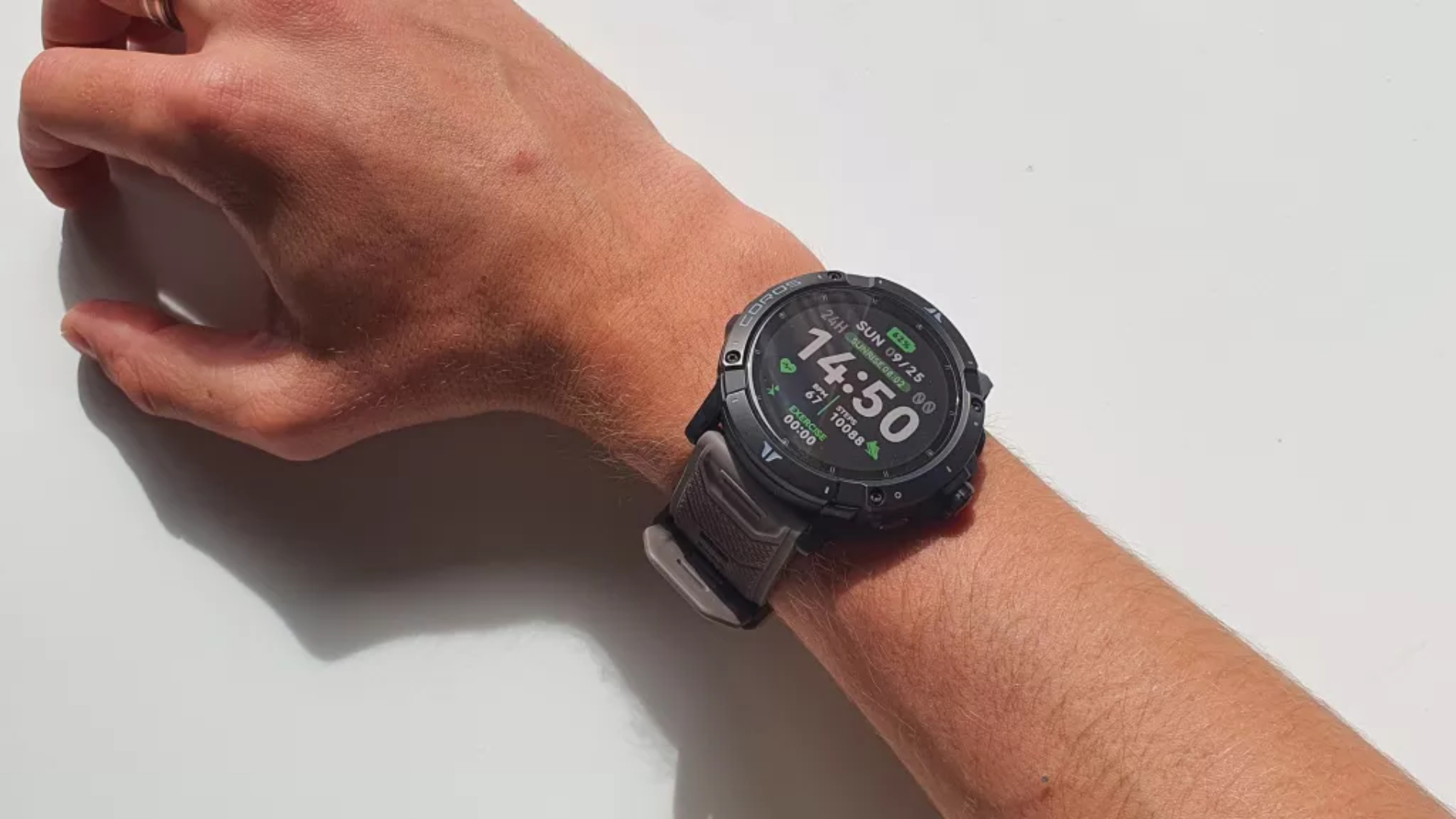Coros Vertix 2 review – the battery life of this smartwatch is insane
An rugged adventure-ready smartwatch with an astounding battery life

If you're after an adventure-proof smartwatch with a massive battery life, the Coros Vertix 2 manages to undercut the price of some its rivals from Garmin and Polar. If your training doesn't take you quite so far afield, it might be worth checking out Garmin's Forerunner 955 Solar – it's less rugged, but it is a little cheaper and comes packed with the latest tech.
-
+
Huge memory for music
-
+
Maps and navigation are clear
-
+
Continuous firmware updates keep it up to date
-
-
No solar charging
-
-
A little bulky
You can trust Cycling Weekly.

If you head to the Coros website, the Vertix 2 is described as a watch “For adventurers who go to the extreme”. It’s a beast of a watch - with a 1.4inch touch screen and it feels heavy in the hand compared to other, 'normal', GPS watches.
Relative to watches of its size, the Coros Vertix 2 is actually quite light. It is very large on the wrist, which is fine if you have big hands, but if you’re not blessed with these as I am then it’s possible you’ll find this watch a bit funny looking. Once you get used to wearing it though, it’s as close to the ultimate adventure watch that I’ve ever worn.
The Coros Vertix 2 has a host of features including maps, a 32GB memory to which you can upload music – enough for over ten thousand songs and navigation features.
It comes equipped with an optical wrist HR sensor (which gives suspicious readings at times, but they all do so this isn’t unique to Coros). Fortunately, you can simply pair a chest strap if you want more accurate biological readings. It will also track your HRV, sleep data and a whole host of biological tracking.
Coros Vertix 2: mapping
From Coros, you have two main mapping options. The first, 'topographic maps', shows a record of a land area, giving geographic positions and elevations for both natural and man-made features.
The second, 'landscape maps', are more basic, showing street information and some natural features but leaving out borders, points of interest and administrative boundaries.
I found the landscape maps were fine for most of my navigational purposes – especially on the bike, when you're moving quite quickly and therefore need to be zoomed out that bit further to provide a sense of context for where you actually are. With the screen zoomed out, it helps to not have so much detailed information cluttering up the screen.
The latest race content, interviews, features, reviews and expert buying guides, direct to your inbox!
Even when running I found the landscape maps generally sufficient. But it is nice to have the topographic maps option for more adventurous runs / hikes in more remote areas nonetheless.
Uploading routes was done quite easily through the Coros app, and the maps page was fast, clear and responsive.

Coros Vertix 2: battery Life
The battery life of the Coros Vertix 2 is really quite impressive. When I first received this watch I charged it up to 63 per cent then went about my normal training for the next two weeks – and it still only dropped to 21 per cent.
For me, normal use entails going on a run once every other day as well as a 3.5 hour bike ride and a couple of swims. On average, I'm losing about three per cent of charge each day (more on riding days, less on rest days). But that means I could get away with charging it only once each month.
If you just use it as a wrist decoration and for generic tracking it will last twice as long.
But obviously, using more power intensive features regularly will drain the battery a little faster but if you head out on an adventure with this fully charged, you’ll probably be alright unless you get very, very lost.
Coros Vertix 2: satellite features
With the ability to talk to all five major satellite systems (GPS, GLONASS, Galileo, QZSS, and Bidou), you’re unlikely to find yourself in a blind spot. The Coros boasts dual frequency satellite communication as well, the idea being that your watch will automatically switch between frequencies to communicate with a satellite to improve consistency of communication.
It's similar to the functionality Garmin added to its Edge 1040 Solar headunits earlier this year and is genuinely quite useful.
If you live in a small town surrounded by wide open fields, then sure, you probably aren't going to appreciate it much. But if you ever ride through dense forests, urban areas with high-rise buildings or deep in any mountain ranges, the improved accuracy really makes a difference.
It's especially useful for running, too, as you tend to zoom in much closer and the paths aren't as clearly defined as tarmacked roads. A wandering GPS lock can through you off – but this wasn't much of an issue with the Coros Vertix 2.
Coros Vertix 2: durability
When I first started testing this watch I was in the prime environment, thinking nothing of taking it 2,000m up a mountain generally adventuring. More recently, I've been in Reading, Berkshire, which sits pretty much right at the opposite end of the scale.
To be fair, it is quite close to the Chilton Hills, which can be brutally step (although fairly short) and boasts some of the most quintessentially British villages you can imagine. It's certainly fair to say it's not the most limit-pushing part of the world though.
Still, I've been wearing the Coros Vertix 2 for rides on- and off-road, runs, and open water swims – and there's been no scratches or visible marks on the watch face or its housing. The strap also seems unscathed.
If you’re going up Everest, I imagine it will probably be fine but for ‘regular’ use I can assure you it will be.
Coros Vertix 2: value and conclusion
At $699.00 / £599.00, this is unquestionably towards the top-end of the smartwatch market, but it's worth bearing in mind that there are other models which are significantly more expensive still.
Garmin Epix, for instance, has much of the same features to the Coros Vertix 2, but comes in at a whopping $999.99 / £899.99 and the claimed battery life is only 16 days.
That said, Garmin's range is massive and different lines are getting updated at different times. The Forerunner 955 Solar – as hinted by the name – has comes with that solar charging tech, although the claimed battery life is 20 days from a full charge. Still, the watch boasts a touch screen, colour mapping, multi-band GPS and you get the benefits of Garmin's Connect platform. It's 'only' $599.99 / £549.99 as well.
Essentially, if you're after a rugged smartwatch with an incredible battery life, the COROS Vertix 2 is cheaper than many of the alternatives. If you're more about performance than adventure, and if battery life isn't quite so important, then the Forerunner 955 Solar offers more tech for less.

Tom Epton is a freelance writer and data scientist. Originally training as a scientist after completing his studies in physics he realised that cycling was what he wanted to spend his life thinking about. Now he works with manufacturers, athletes and teams using cutting edge data science methods to find performance gains. Tom writes primarily about sport-science and tech!